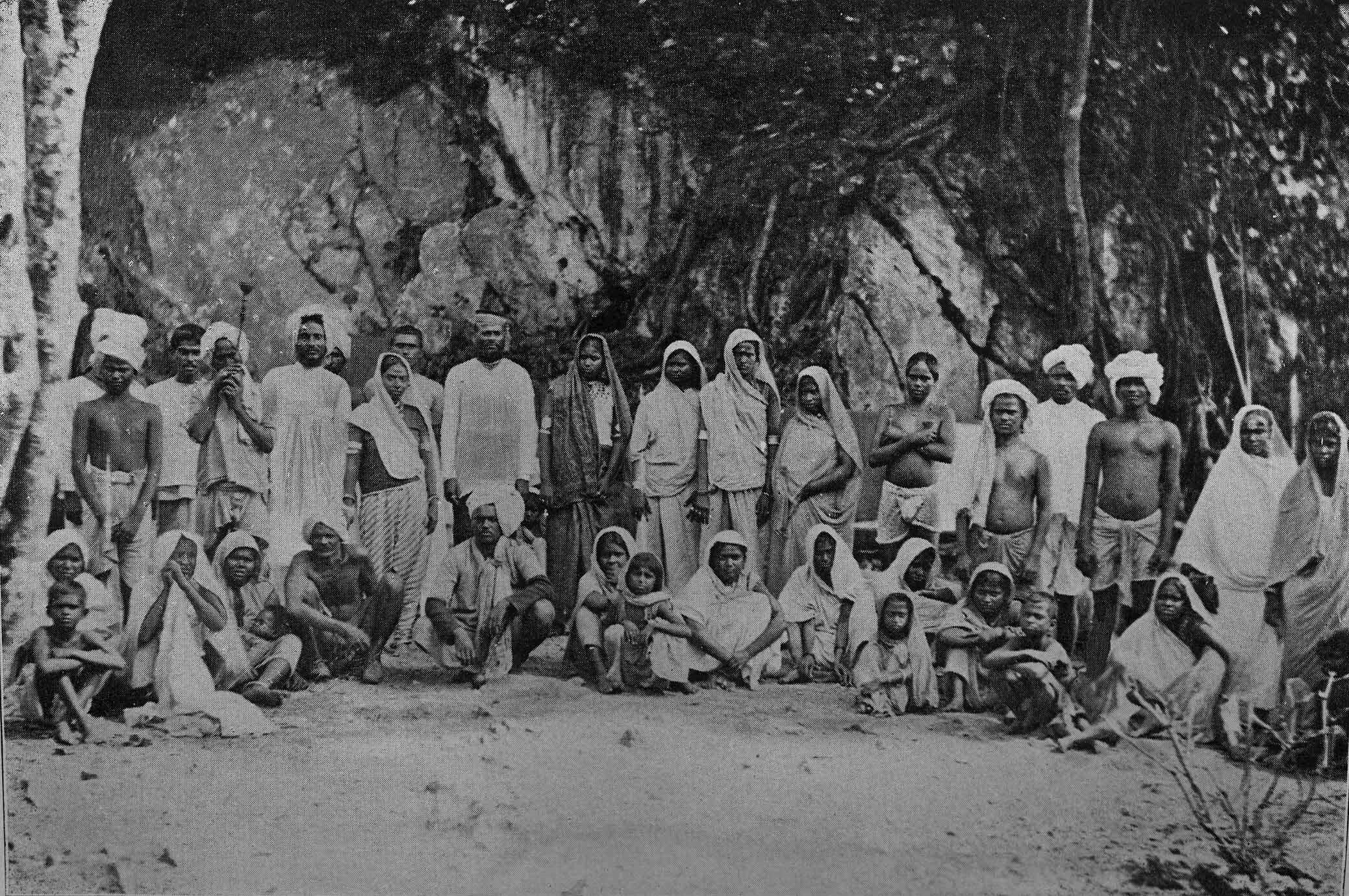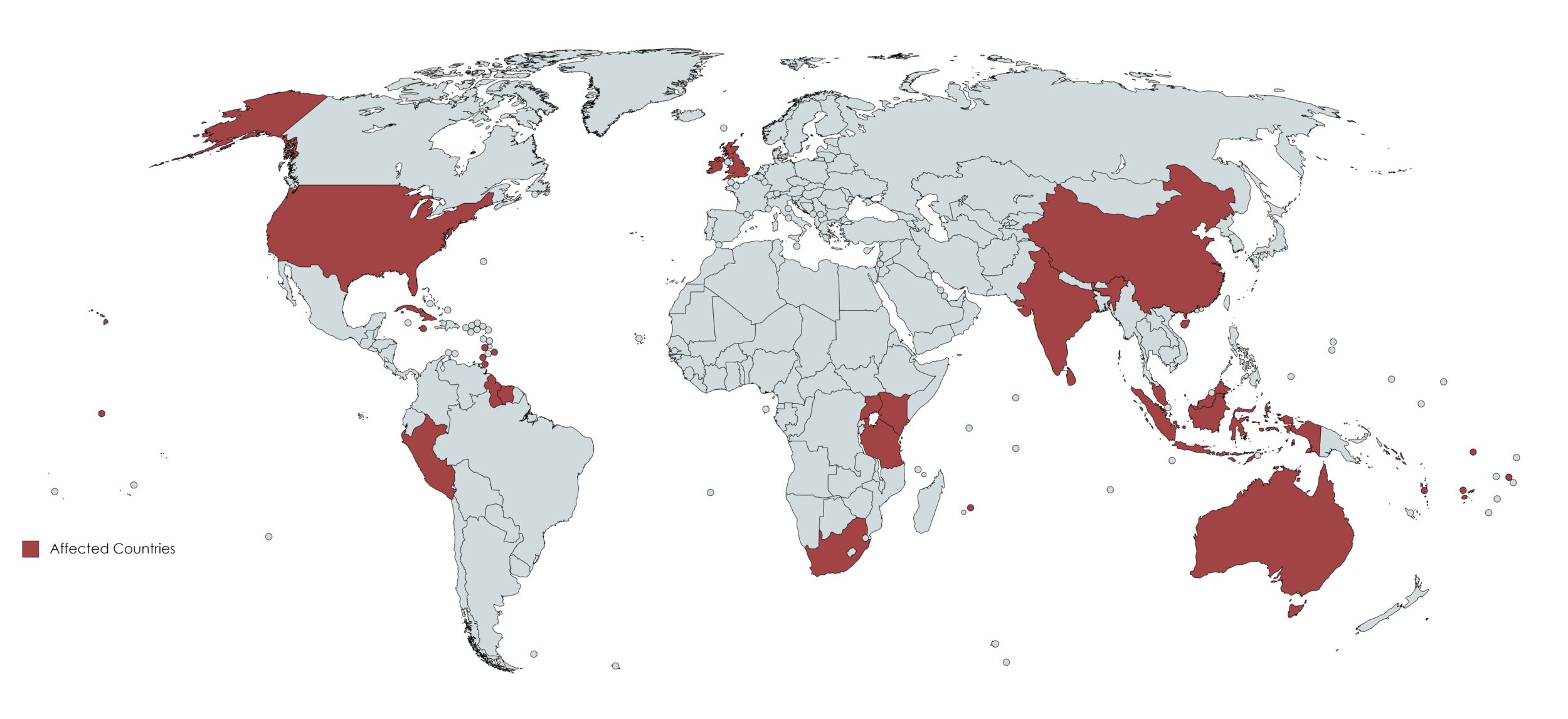
A History of Indentureship
Background
An indenture, as a temporary contract or agreement between an employer and labourer, has existed in myriad cultures and incarnations for centuries. However, from the 16th century onwards, the European desire to exploit the agricultural possibilities of their new colonies meant the system took on a vaster nature. Workers were contracted to work for an employer for a period of years (embarking on international voyages from which few would return), frequently enticed by the promise that completion of the indenture contract could sometimes include a portion of land to settle on in lieu of a voyage home.
Affected Countries
Australia, Barbados, China, Cuba, Fiji, Grenada, Guadeloupe, Guyana, India, Indonesia, Ireland, Jamaica, Kenya, Kiribati, Malaysia, Martinique, Mauritius, Peru, Portugal, Réunion, Samoa, Singapore, Solomon Islands, South Africa, Sri Lanka, St Lucia, Suriname, Tanzania, Thailand, Trinidad and Tobago, Tuvalu, Uganda, United Kingdom, United States, Vanuatu.
Emigration of Indian Indentured Labourers
Lal, B.V., 2012. Chalo Jahaji: On a journey through indenture in Fiji. Anu E Press.
Indentureship and the British Empire
In relation to the British Empire, the largest and most concerted expression of indenture occurred between 1834 and 1920, when two million Indians, and thousands of others from across Asia, Africa, and Oceania were exploited under a system intended to replace enslaved African labour in the Caribbean and Mauritius. Previously, many thousands of Irish, English and Scottish people were forced into indentureship in the New World. Often recruited with false promises and misinformation, workers had little recourse to justice from a colonial project that was entirely dependent on their labour for its capital. Wherever it has occurred, indenture has almost universally included forms of abuse and exploitation. In the very worst cases, such as blackbirding in Australia, ‘recruits’ could be kidnapped, enslaved and compelled to work on the plantations.
Many of those who volunteered to work did so because they were fleeing famine (as a result of colonial maladministration and the failure of Indian leadership), brutish money lenders, caste restrictions and domestic violence. Widows - who according to backward Indian traditional practice, were shunned and scorned by their husbands’ families - left willingly, drawn by the prospect of a new life in a new land.
Aapravasi Ghat, Port Louis, Mauritius
Located in the capital of Port Louis, the Aapravasi Ghat is the remains of an immigration depot, the site from where modern indentured labour Diaspora emerged. The Depot was built in 1849 to receive indentured labourers from India, Eastern Africa, Madagascar, China and Southeast Asia to work on the island’s sugar estates as part of the 'Great Experiment’. This experiment was initiated by the British Government, after the abolition of slavery in the British Empire in 1834, to demonstrate the superiority of ‘free’ over slave labour in its plantation colonies. The success of the 'Great Experiment' in Mauritius led to its adoption by other colonial powers from the 1840s, resulting in a world-wide migration of more than two million indentured labourers, of which Mauritius received almost half a million.
The buildings of Aapravasi Ghat are among the earliest explicit manifestations of what would become a global economic system. The Aapravasi Ghat site stands as a major historic testimony of indenture in the 19th century and is the sole surviving example of this unique modern diaspora. It represents not only the development of the modern system of contractual labour, but also the memories, traditions and values that these men, women and children carried with them when they left their countries of origin to work in foreign lands and subsequently bequeathed to their millions of descendants for whom the site holds great symbolic meaning.
Aapravasi Ghat is a UNESCO World Heritage Site. For more information about the site’s outstanding universal value, please visit UNESCO’s dedicated web page here.
Legacy
It is testament to the resilience of indentured communities that resistance to colonialism and to indenture were always a feature of plantation life. Whether they were protesting through physical uprisings on estates or legal challenges and testimonies, the indentured did not experience the system passively and their determination to preserve their identity has paid dividends for their descendants. Through cuisine, language, music, dance, religion, and cultural practices, the descendants of indentured labourers were able to connect themselves to the traditions of their ancestors. Many thrived in their new countries of abode becoming entrepreneurs, businessmen/women, lawyers, doctors, engineers, sportsmen/women, politicians, writers and artists. Their efforts helped to shape the economies and cultures of the various societies they inhabited.
Photos sourced from: The National Archives UK and SMU Libraries Digital Collections




